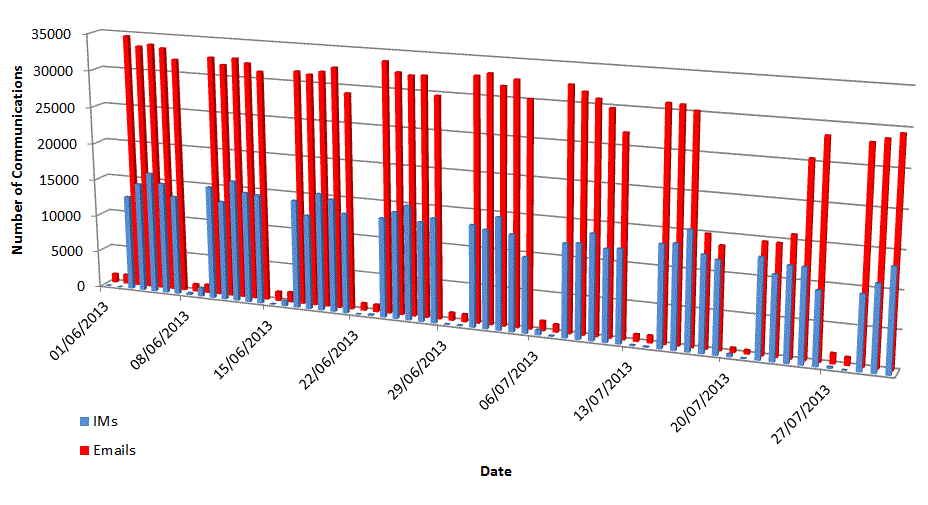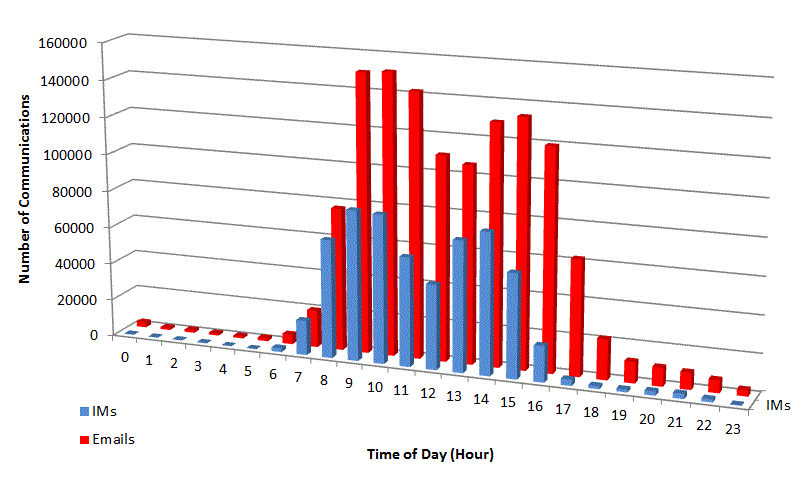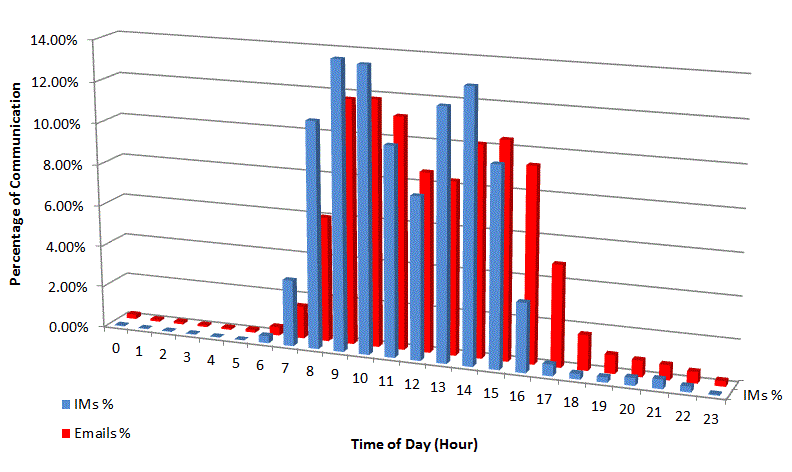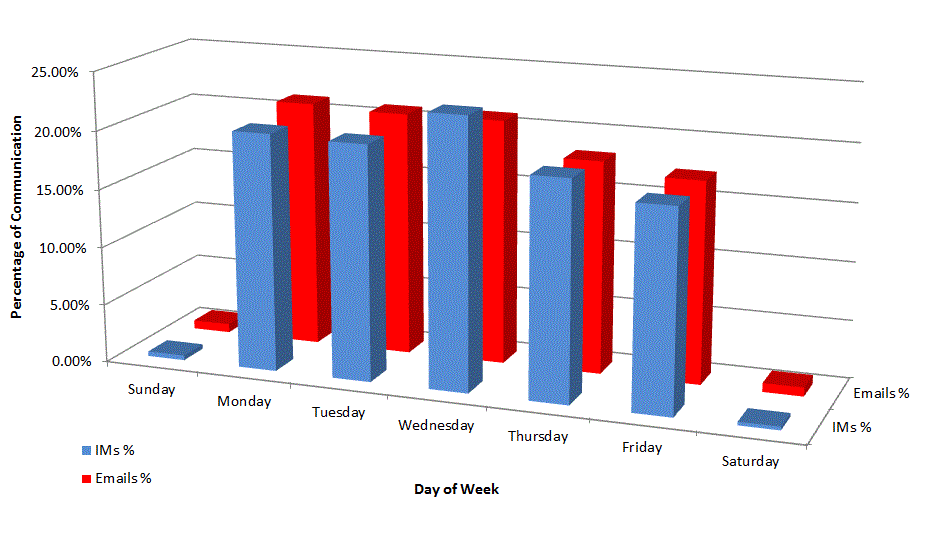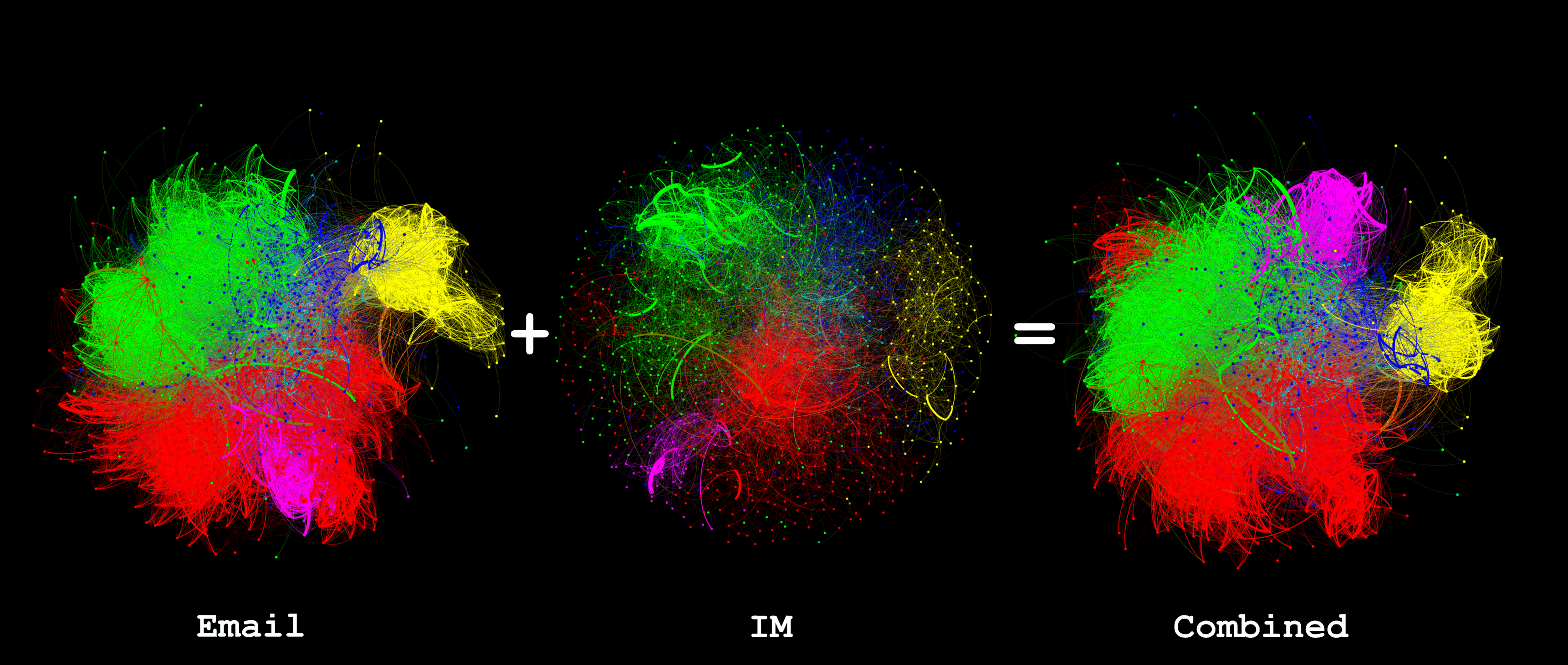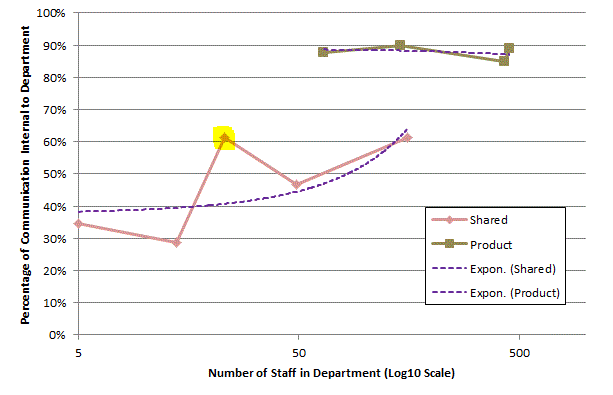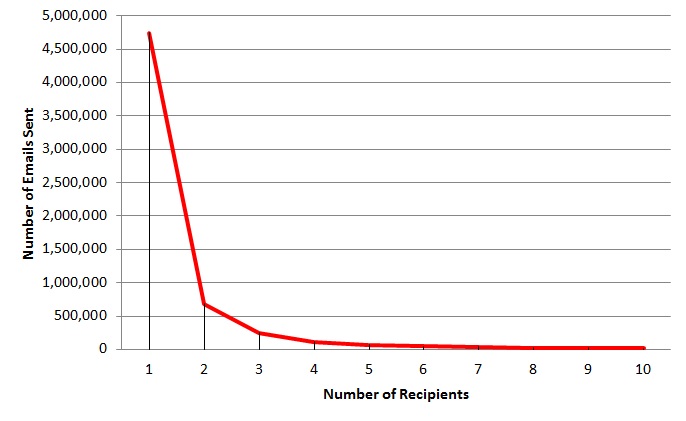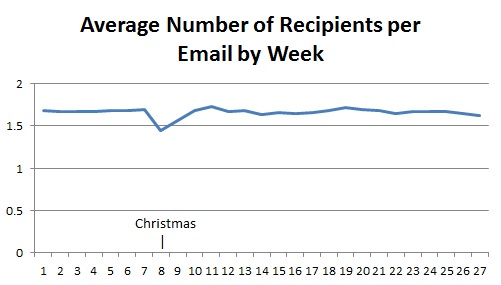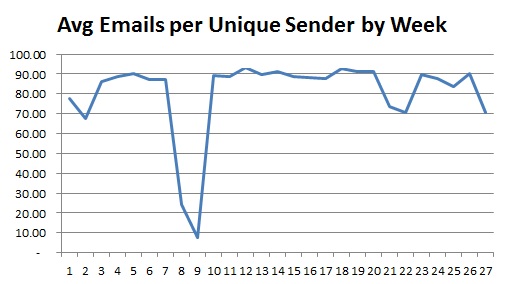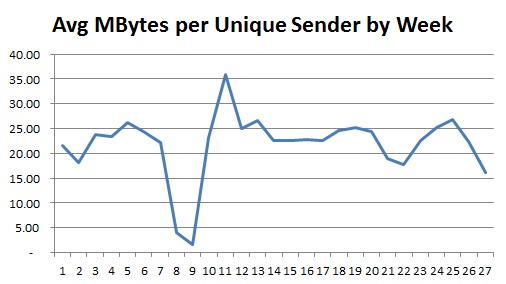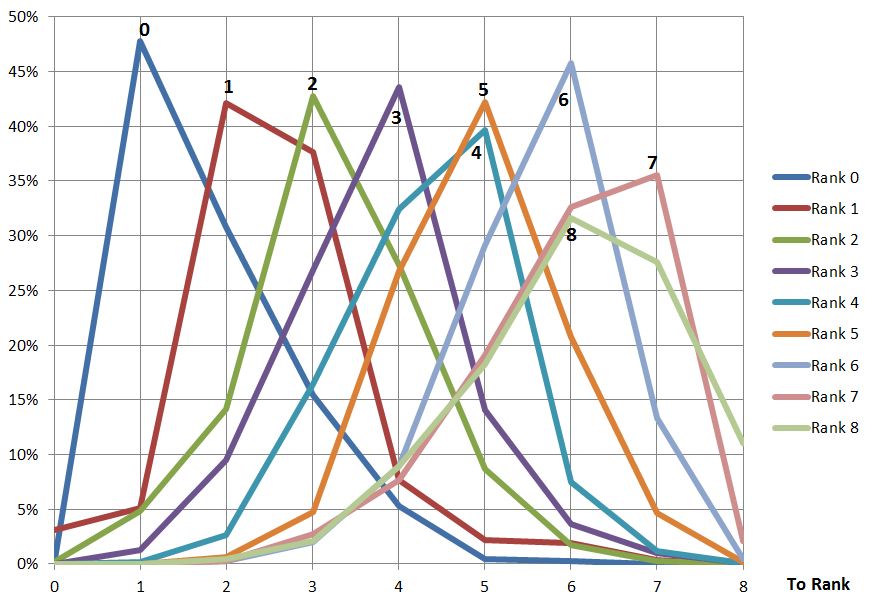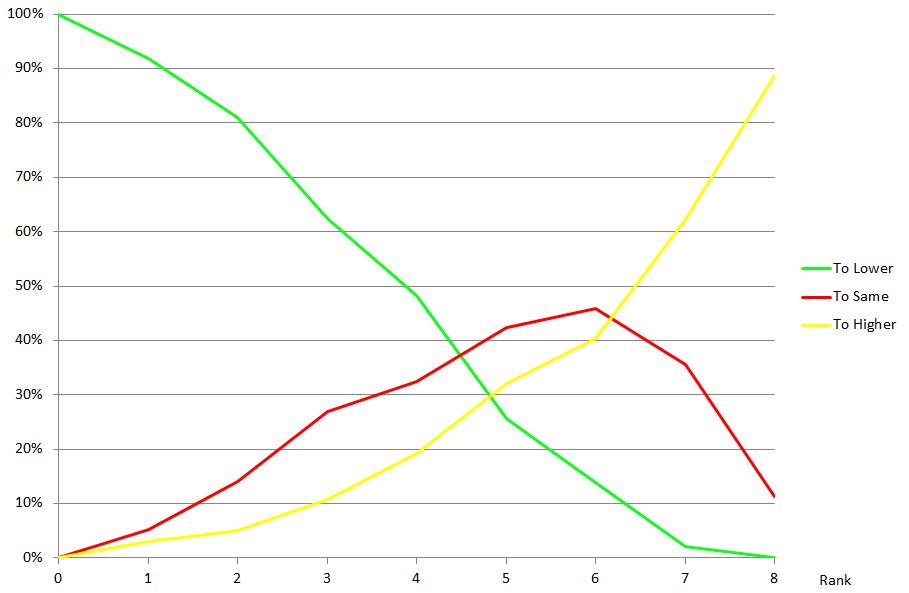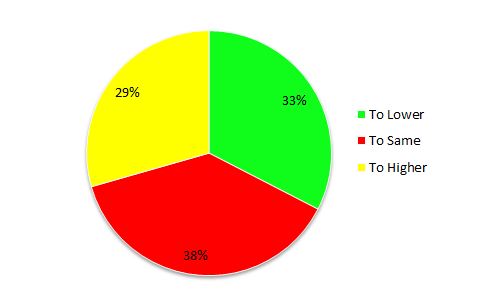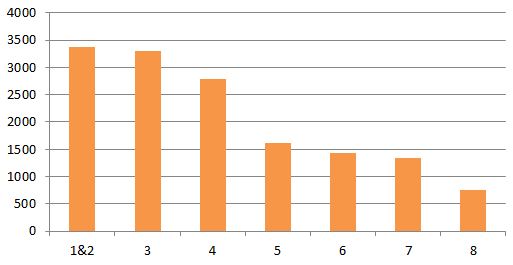Some time ago I wrote about examining the numbers of Emails sent during meetings and concluded by saying “looking at instant message traffic during meetings would be more revealing” . I now have some IM traffic to compare.
Before continuing I would like to emphasise that all this data is anonymous and I do not believe it should be examined in any other way because humans are more complex than any analysis of this nature can reveal, it is only useful to find biases for a particular behaviour in a particular situation or identify trends.
Because I do not have IM data for the same period that my original post relates to I have first re-created the email analysis but restricted it to meetings with all-internal attendees because the IM system is only available employees of the organisation:
This is similar to the previous analysis with the exception of less emails being seen from smaller meetings. This could be due to some major changes in the organisation but I’m not investigating that now.
And now the IMs:
Well not the result I expected but this is what the data tells us: no obvious pattern to IM use compared to meeting size. I’m curious if there might be something buried in here, for example is it always the same people using IM in meetings, are they all in the meeting or are they in communication with people not in the meeting; does this ratio change with meeting size?
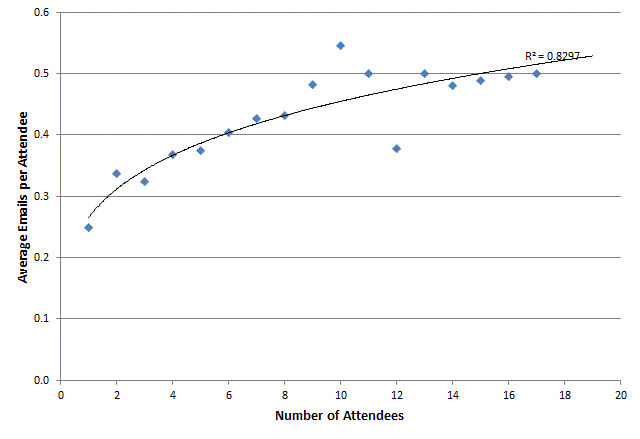
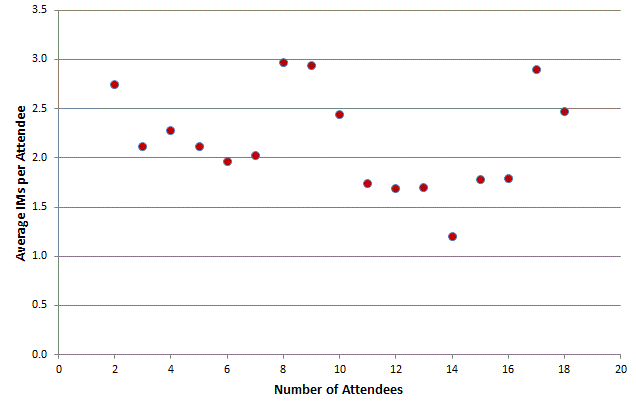
 Follow
Follow